

Home > Guides > How to Create An Assessment for Your Website
Engaging your audience and encouraging their active participation on your website is essential in fostering an online community. One effective way to achieve this is by adding assessments to your website that not only entertain your audience but also provide valuable insights into their needs and preferences. And the good news is, you don't need to be a tech expert or spend a fortune - thanks to tools like OnlineExamMaker, creating an engaging assessment for your website has been made easy and accessible to anyone.
In this blog post, we'll show you how to create a assessment for your website using OnlineExamMaker, a powerful yet user-friendly platform designed for educators, marketers, bloggers, and anyone who wants to engage their audience with interactive content. With this tool, you can create and customize assessments that match your brand and cater to the interests of your audience, while also getting insightful data that can help you improve your website's engagement and user experience. So, let's dive right in and learn how to create a assessment that captivates your audience and boosts your online presence!
A assessment is an excellent way to engage your audience and attract traffic to your website. Creating a assessment with OnlineExamMaker is effortless and allows you to customize your assessment to your brand's style and needs. Add multimedia elements such as images and videos to enhance the assessment experience and make it more interactive.
By embedding the assessment on your website, you create an opportunity for visitors to engage with your brand, and share their results with their social media following, thereby increasing your brand's reach.
There are various types of embeddable online assessments designed to evaluate skills or knowledge of visitors of your website.
Personality Quizzes
A personality quiz is a type of assessment designed to help individuals understand and identify specific traits, preferences, or characteristics that make up their unique personality. These quizzes are often used for entertainment, self-reflection, and to gain insights into one's behavior, preferences, and communication style.
Coding Challenges
Participants write and execute code to solve problems. Coding assessments are common in computer science and programming courses.
Video Assessments
Participants record video responses to prompts or questions. This format assesses communication skills, presentation abilities, and sometimes subject-specific knowledge.
Behavioral Assessments
Assessment takers respond to scenarios or questions that assess their behavior, decision-making, and interpersonal skills. This type is common in job recruitment and leadership development.
Surveys and Questionnaires
Participants answer a series of questions to gather information about their opinions, preferences, or experiences. Surveys are often used for research or feedback purposes.
Self-Assessment
Website visitors evaluate their own understanding and performance, reflecting on their strengths and areas for improvement.
With OnlineExamMaker, you can create assessments that are unique, engaging, and sure to leave a lasting impression on your audience. Whether you're looking to boost engagement, increase brand awareness, or simply entertain, creating a assessment is the perfect way to achieve your goals. Sign up for OnlineExamMaker today and start creating your unique assessments that are sure to keep your audience coming back for more!
Are you ready to create an engaging assessment for your website? With OnlineExamMaker, it's easier than you think! Follow these simple steps to create your assessment.
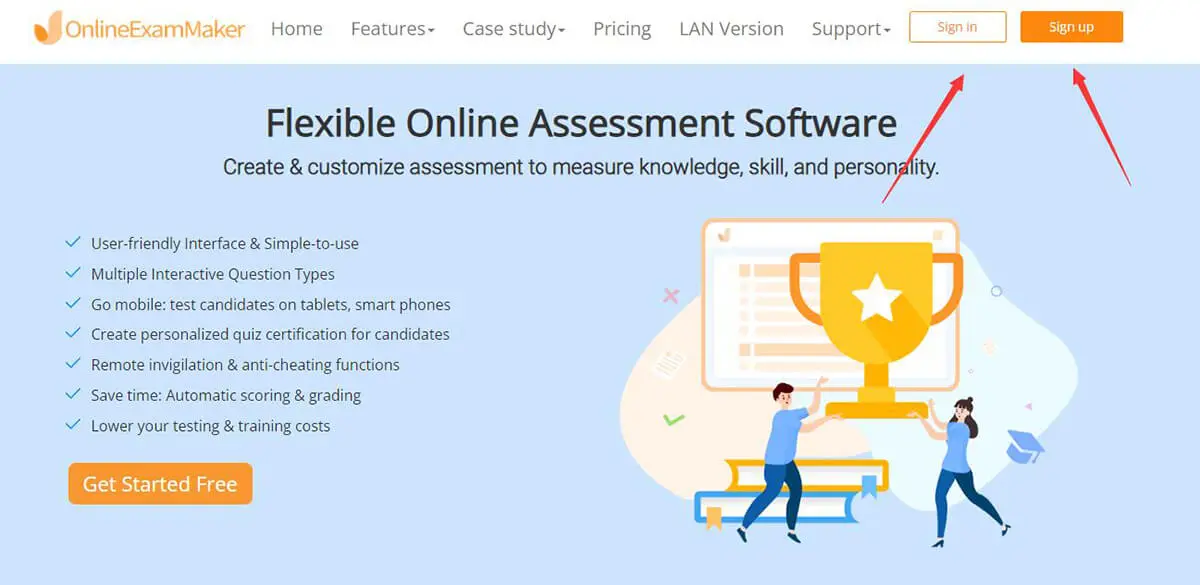
Before everything else, visit OnlineExamMaker and sign up for an account using an email account if you haven't already. But if you do, just sign in and immediately go to your profile dashboard. Using OnlineExamMaker to create your website assessment will give you an advantage in both time and efficiency.
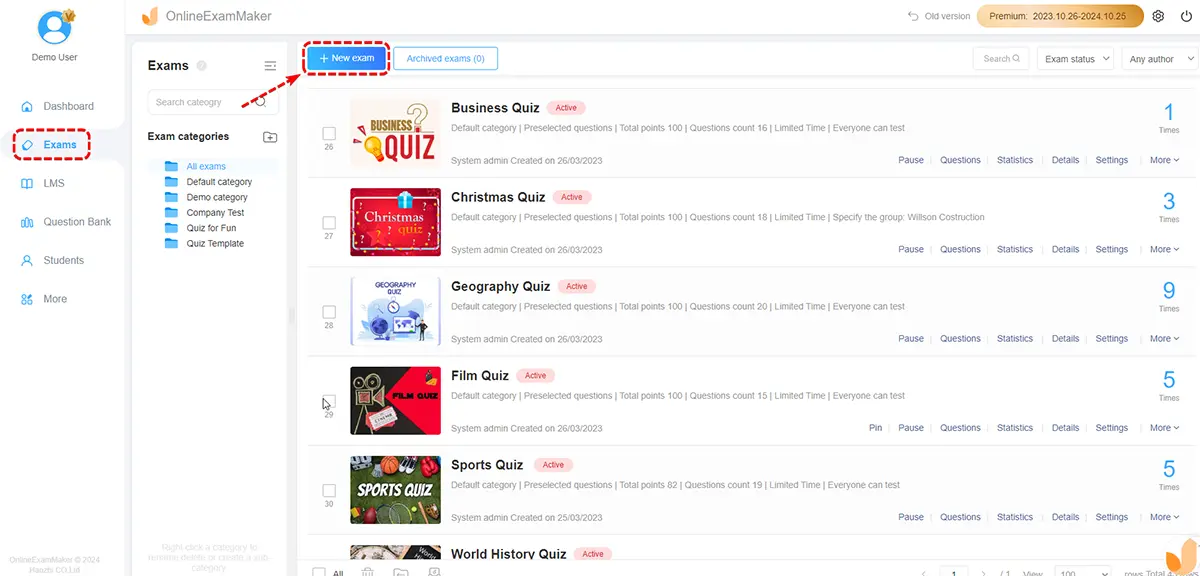
Once you can sign into your account, you will be redirected to the dashboard. To start creating your assessment for your website, simply click the "+ Add new exam" button under Quick Interactions in the dashboard.
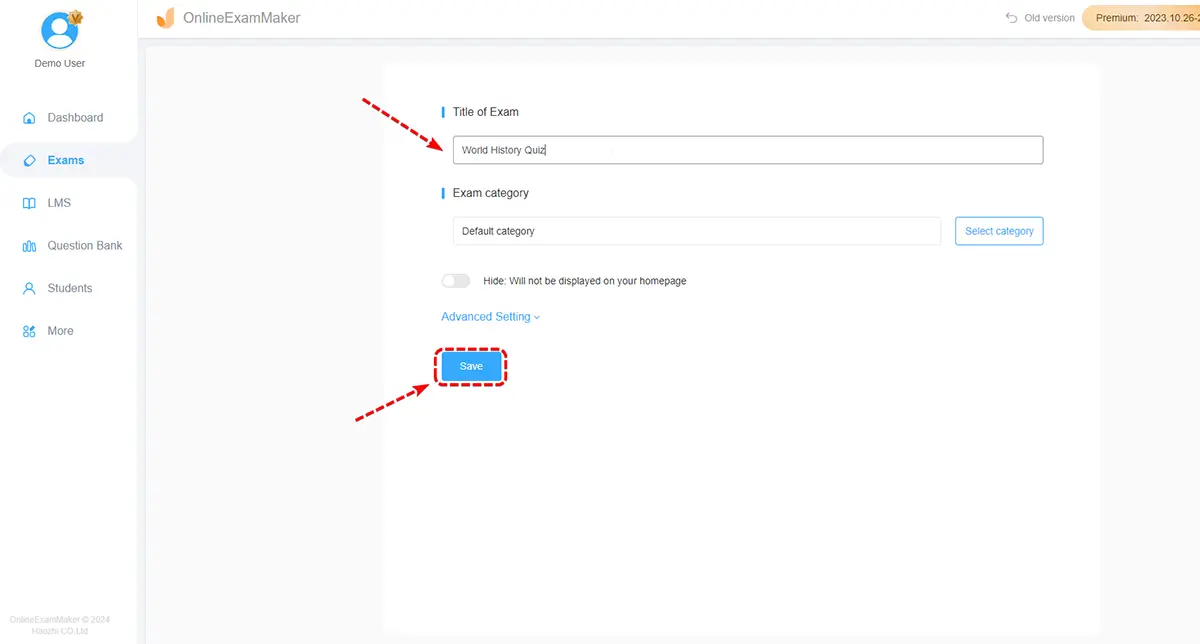
To make the assessment more on-brand, OnlineExamMaker has a great feature where you can customize your exam from the title of the exam up to the settings. However, what's amazing is you can also add a brand and logo to your assessment that will help match up to your website.
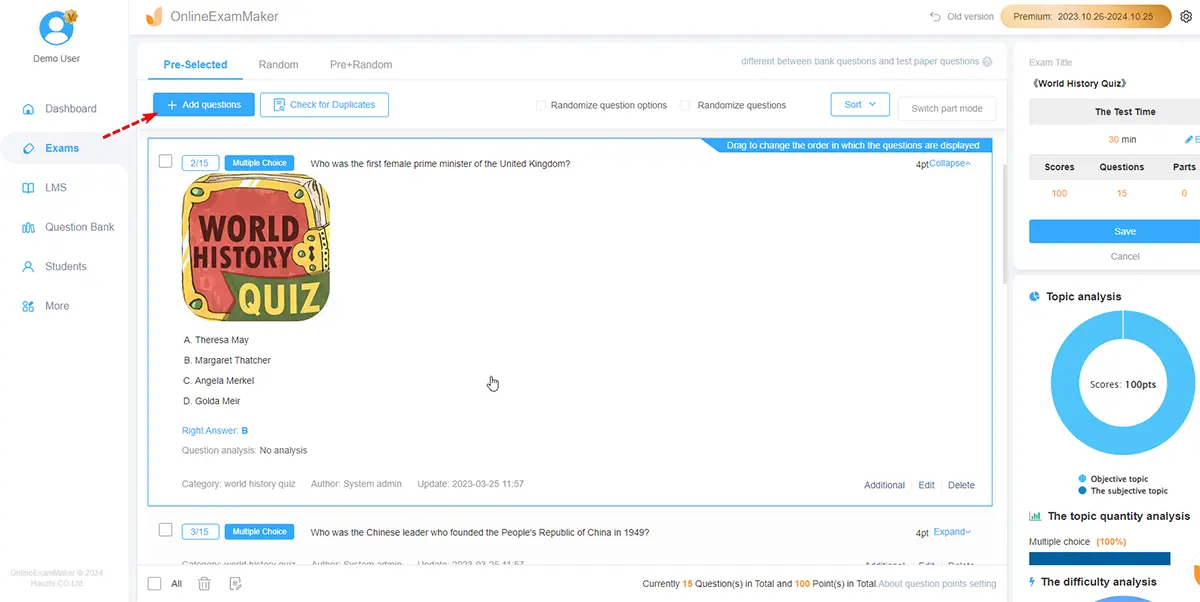
This is where you will add all the questions that you have compiled for your website. You can add your questions from the Question bank, upload/import the compiled questions in a Word or Excel file or add them individually.

Set the time limit, number of attempts, and other settings to match your preferences.
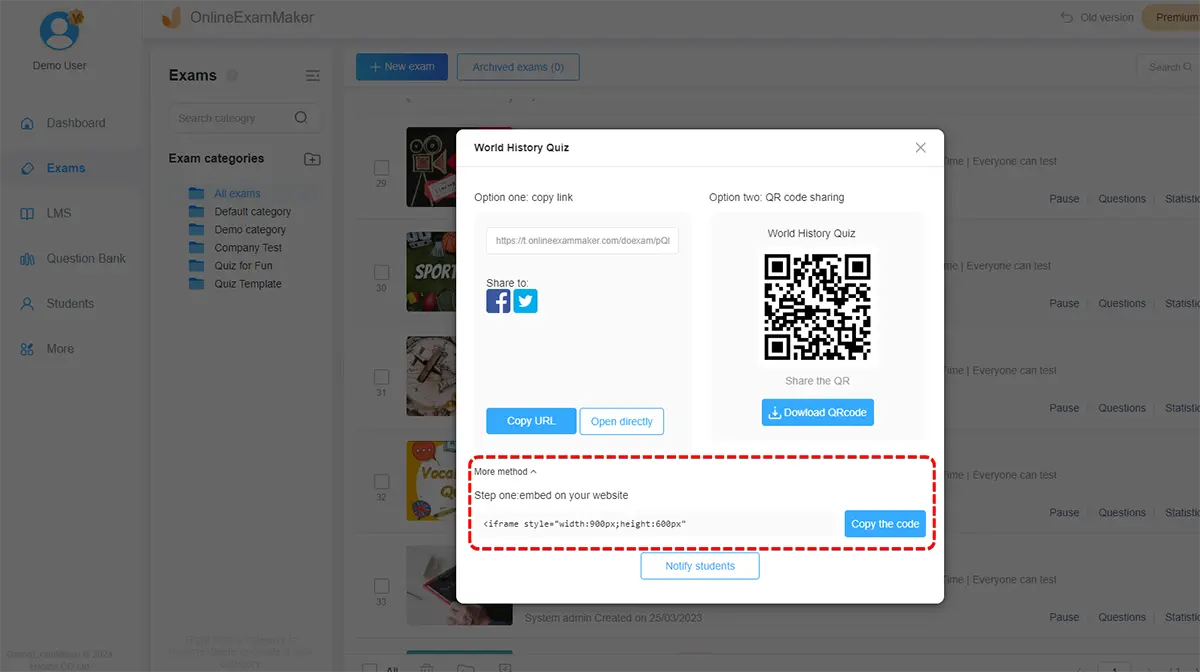
The very last step in creating a assessment for your website is to publish it. To publish your assessment, simply click the save and publish button as indicated in the photo below. You can share the assessment via a link to email, or social channels.
Click "More method", you can view the embed code of the assessment. Simply copy a few lines of codes, and add them to a web page, you can present your online assessment in your website, blog, or landing page.
Creating a assessment for your website has never been easier thanks to OnlineExamMaker. With its user-friendly interface and customizable options, you can design a assessment that engages your audience and provides valuable insights into their preferences and knowledge. Whether you're looking to create a fun assessment to entertain your visitors or a more serious assessment to evaluate their skills, OnlineExamMaker has the tools you need to make it happen. So why not take advantage of this powerful platform today and start creating your assessment? With a little creativity and effort, you can create a assessment that not only enhances your website's content but also adds value to your visitors' experience.
An engaging embedded online assessment can help webmasters reduce bounce rate, boost interactivity, and collect leads. Here are 7 pro tips for creating an interactive assessment:
1. Clearly define learning objectives upfront and craft questions that directly test those goals.
2. Choose appropriate question formats - multiple choice, true/false, matching, fill in the blank etc. Mix up types to reduce monotony.
3. Keep questions focused without overly complex wording that adds cognitive load.
4. Include a variety of difficulty levels �C some simple factual recall along with analysis/evaluation questions.
5. Add relevant images, illustrations, audio clips, videos wherever beneficial to enhance engagement.
6. Use bolding, highlighting and color coding judiciously to emphasize key text and ideas.
7. Write clear concise instructions on how assessment will be timed, scored, submitted and monitored for academic integrity.
Smart & secure online exam system trusted by 90,000+ educators & 300,000+ exam takers all around the world! And it's free.


